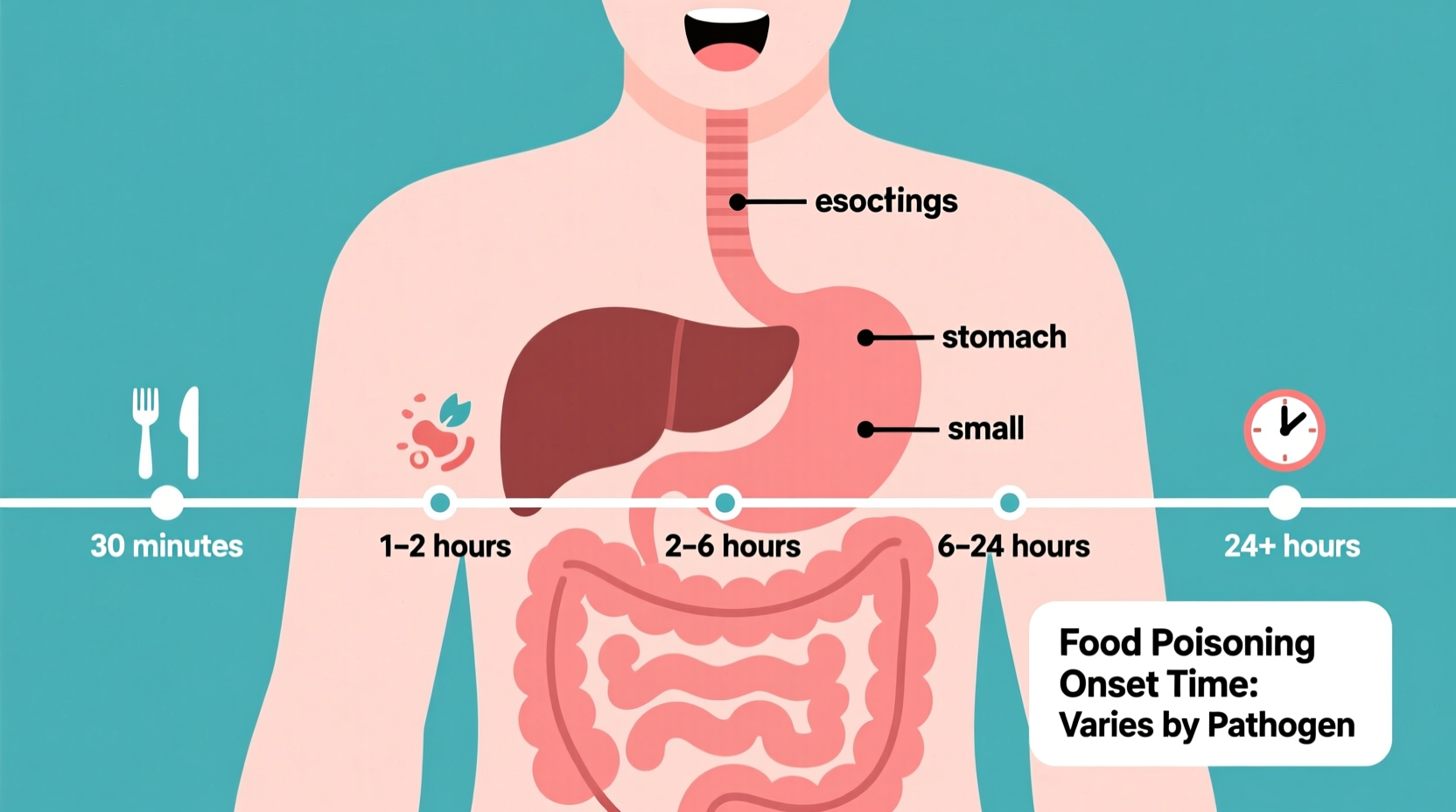Wondering how fast does food poisoning set in after that questionable meal? You're not alone. When your stomach starts churning, knowing the typical food poisoning onset time helps determine if your symptoms match foodborne illness or something else. Understanding these timelines empowers you to make informed decisions about seeking medical care.
Why Food Poisoning Onset Times Vary Significantly
The timeframe for food poisoning symptoms isn't one-size-fits-all. Different pathogens have unique biological processes that determine how quickly they make you sick. Bacteria need time to multiply in your digestive system before producing enough toxins to cause symptoms. Viruses must invade your cells and replicate. Parasites often require complex life cycles before triggering illness.
According to the Centers for Disease Control and Prevention (CDC), the incubation period for foodborne illnesses depends primarily on three factors:
- The specific pathogen causing the infection
- The quantity of contaminated food consumed
- Individual health factors including immune status and age
Food Poisoning Timeframes by Pathogen Type
Understanding the how soon after eating do food poisoning symptoms start question requires examining specific pathogens. The FDA Food Code and CDC data reveal significant variations in onset times:
| Pathogen Type | Common Sources | Onset Time Range | Typical Duration |
|---|---|---|---|
| Staphylococcus aureus | Deli meats, salads, cream-filled pastries | 30 minutes - 8 hours | 1-2 days |
| Norovirus | Raw shellfish, contaminated water, ready-to-eat foods | 12-48 hours | 1-3 days |
| Salmonella | Raw eggs, poultry, unpasteurized milk | 6 hours - 6 days | 4-7 days |
| E. coli (STEC) | Undercooked ground beef, raw produce | 1-10 days | 5-10 days |
| Listeria | Soft cheeses, deli meats, refrigerated smoked seafood | 1-4 weeks | Variable |
| Botulism | Home-canned foods, fermented fish | 12-36 hours | Weeks to months |
Factors That Accelerate or Delay Symptom Onset
Your personal food poisoning timeline can differ from standard ranges due to several contextual factors:
- Amount consumed: Larger quantities of contaminated food often lead to faster symptom onset
- Individual immunity: People with compromised immune systems may experience quicker or more severe symptoms
- Age considerations: Infants and elderly adults often show symptoms sooner than healthy adults
- Stomach acidity: Medications that reduce stomach acid can shorten incubation periods
- Food matrix: Fatty foods can delay stomach emptying, potentially slowing pathogen delivery to intestines
Recognizing Early Food Poisoning Symptoms
Knowing how quickly food poisoning symptoms appear helps distinguish it from other gastrointestinal issues. Early signs often include:
- Nausea and queasiness (often the first symptom)
- Abdominal cramping and discomfort
- Sudden loss of appetite
- Mild fatigue or weakness
These initial symptoms typically progress to more definitive signs like vomiting, diarrhea, and fever within hours. The CDC emphasizes that symptom patterns help identify the likely pathogen—bacterial infections often cause fever, while viral illnesses typically present with more vomiting.

When to Seek Medical Attention
While most food poisoning cases resolve without treatment, certain warning signs require immediate medical care:
- Symptoms beginning within 2 hours of eating (possible chemical or toxin exposure)
- Blood in vomit or stool
- Signs of dehydration (dry mouth, reduced urination, dizziness)
- Fever above 101.5°F (38.6°C)
- Symptoms lasting more than 3 days without improvement
The American College of Gastroenterology recommends contacting a healthcare provider if you suspect listeria or botulism poisoning, as these require specific medical interventions. Pregnant women, infants, and immunocompromised individuals should seek care sooner due to higher complication risks.
Preventing Food Poisoning Through Smart Practices
Understanding how fast food poisoning can develop underscores the importance of prevention. Implement these evidence-based strategies:
- Follow the 2-hour rule: Refrigerate perishables within 2 hours (1 hour if temperatures exceed 90°F/32°C)
- Cook meats to proper internal temperatures (poultry to 165°F/74°C)
- Wash hands thoroughly before handling food and after touching raw meat
- Prevent cross-contamination by using separate cutting boards for produce and meats
- Be cautious with high-risk foods like raw shellfish, unpasteurized dairy, and home-canned goods
Food safety experts emphasize that proper temperature control remains the most effective prevention method. The FDA Food Code specifies that keeping foods out of the "danger zone" (40°F-140°F or 4°C-60°C) significantly reduces pathogen growth that leads to rapid food poisoning onset.
Managing Symptoms When Food Poisoning Strikes
If you're experiencing symptoms, focus on these practical steps:
- Stay hydrated with small sips of clear fluids or oral rehydration solutions
- Avoid anti-diarrheal medications for bacterial infections (they can prolong illness)
- Rest to conserve energy for recovery
- Gradually reintroduce bland foods like toast, rice, and bananas as symptoms improve
- Track symptoms and potential food sources to help healthcare providers if needed
Remember that most cases of foodborne illness resolve within 1-3 days with proper self-care. The National Institute of Allergy and Infectious Diseases notes that attempting to eat normally too soon can prolong recovery, so listen to your body's signals about when to resume regular eating.











 浙公网安备
33010002000092号
浙公网安备
33010002000092号 浙B2-20120091-4
浙B2-20120091-4